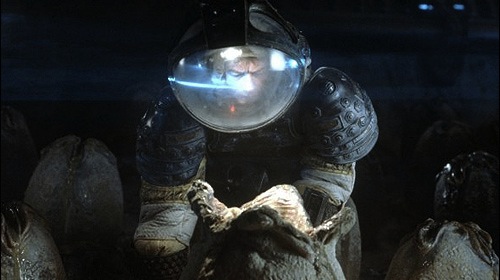It looks like you're using an Ad Blocker.
Please white-list or disable AboveTopSecret.com in your ad-blocking tool.
Thank you.
Some features of ATS will be disabled while you continue to use an ad-blocker.
share:
It seems that the world is on the threshold of another breakthrough. A huge virus, called the Pandora virus that was discovered accidentally
underwater off the Australian coast, has triggered heated debates in the scientific society. What is strange about it and why do many scientists say
that it is of extraterrestrial origin?
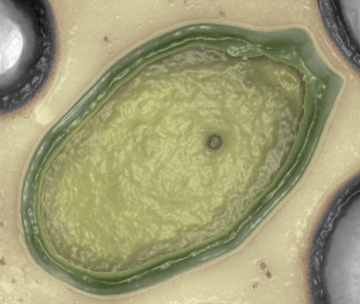
First, the "Pandora" virus is by right regarded as the world's largest virus. Despite that, it is visible with a normal microscope.
Another thing of importance here is that it resembles a bacterial cell. Second, earlier scientists in fact knew nothing about 93 per cent of the "Pandora" genes. That is why scientists mentioned the extraterrestrial origin of the "Pandora" virus.
Besides, it has proved to be a very unpretentious and wide-spread substance. The successful virus multiplication cycle is ensured by the fact that its DNA adsorbs its cells and proteins.
The French scientists - Jean-Michel Claverie and Chantal Abergel - who have discovered the "Pandora" megavirus are sure that after it is carefully studied, biology will make a great scientific breakthrough. A Russian biologist, Svetlana Kasatkina, shares their opinion:
"This discovery changes radically our vision of the nature of viruses. What the French scientists have discovered is really a unique virus. Research work will enable scientists to understand whether the "Pandora" virus has really originated from the full-value cells and to learn more about the evolution of viruses".
Today scientists do not believe that the "Pandora" virus poses danger to human beings. However, at the moment it is somewhat premature to make such statements because research work takes time.
Hence, it is impossible to rule out the extraterrestrial nature of the "Pandora" virus and to say with absolute certainty that it constitutes no danger to mankind..
Other Image :
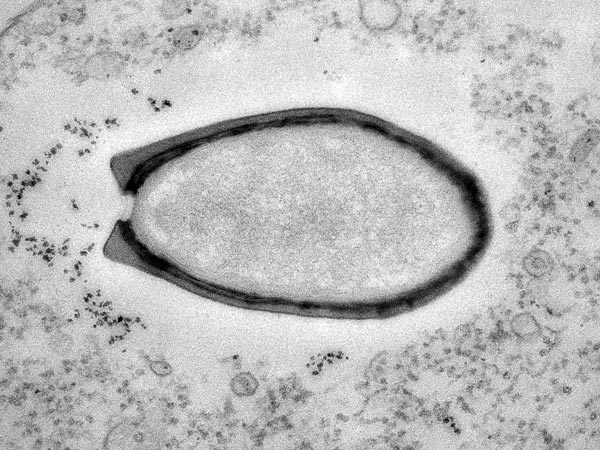
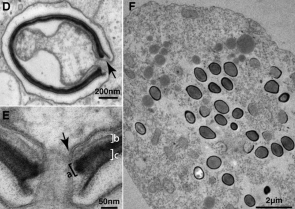
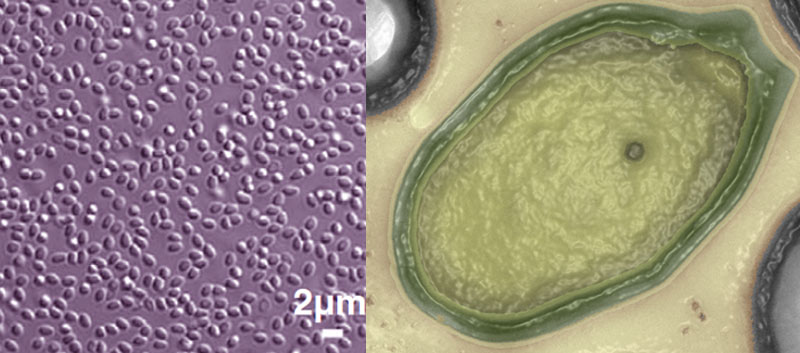
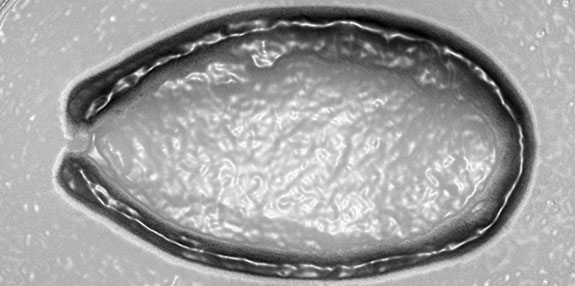
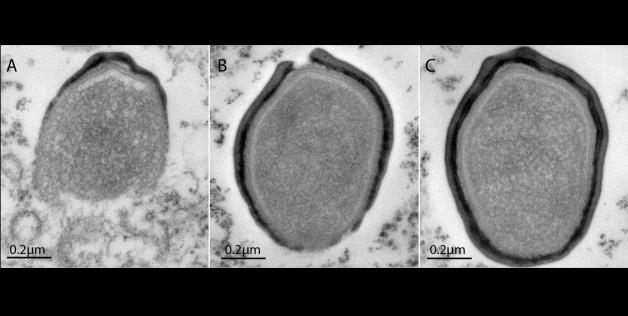
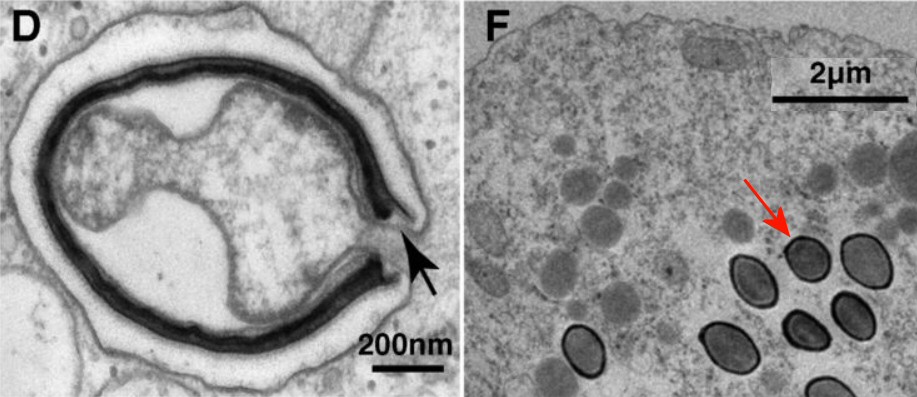


First, the "Pandora" virus is by right regarded as the world's largest virus. Despite that, it is visible with a normal microscope.
Another thing of importance here is that it resembles a bacterial cell. Second, earlier scientists in fact knew nothing about 93 per cent of the "Pandora" genes. That is why scientists mentioned the extraterrestrial origin of the "Pandora" virus.
Besides, it has proved to be a very unpretentious and wide-spread substance. The successful virus multiplication cycle is ensured by the fact that its DNA adsorbs its cells and proteins.
The French scientists - Jean-Michel Claverie and Chantal Abergel - who have discovered the "Pandora" megavirus are sure that after it is carefully studied, biology will make a great scientific breakthrough. A Russian biologist, Svetlana Kasatkina, shares their opinion:
"This discovery changes radically our vision of the nature of viruses. What the French scientists have discovered is really a unique virus. Research work will enable scientists to understand whether the "Pandora" virus has really originated from the full-value cells and to learn more about the evolution of viruses".
Today scientists do not believe that the "Pandora" virus poses danger to human beings. However, at the moment it is somewhat premature to make such statements because research work takes time.
Hence, it is impossible to rule out the extraterrestrial nature of the "Pandora" virus and to say with absolute certainty that it constitutes no danger to mankind..
Other Image :







edit on 9-9-2013 by cheesy because: (no reason given)
reply to post by cheesy
Well, if it does pose a danger to humans it should be easy to find at least.
Unless it mimics other symptoms like so many other viruses.
Well, if it does pose a danger to humans it should be easy to find at least.
Unless it mimics other symptoms like so many other viruses.
Originally posted by TDawgRex
reply to post by cheesy
Well, if it does pose a danger to humans it should be easy to find at least.
Unless it mimics other symptoms like so many other viruses.
this is not new invention Mr. Tdawgrex..scientice say this virus not dengerous...
reply to post by cheesy
Hey Mr. Cheesy you are getting really good at posting pictures now on ATS!! Very good sir! I read someplace several years ago that there are several million virus is a simple teaspoon of sea water....
www.newscientist.com...
There are many things in nature that can bite mankind and with some type of virus being everywhere it has always been a likely candidate to take a big chunk out of us....I saw this a while back and maybe this little big virus bug can shed some light on what being a virus is really like....
Hey Mr. Cheesy you are getting really good at posting pictures now on ATS!! Very good sir! I read someplace several years ago that there are several million virus is a simple teaspoon of sea water....
If I took a teaspoon of seawater, depending on where I was, there would be something like 4 to 16 million viruses in there. They probably infect everything from very basic cells like phytoplankton, right up to whales and polar bears
www.newscientist.com...
There are many things in nature that can bite mankind and with some type of virus being everywhere it has always been a likely candidate to take a big chunk out of us....I saw this a while back and maybe this little big virus bug can shed some light on what being a virus is really like....
reply to post by cheesy
I saw that remark in your OP. But I also saw this as well. It was right above the part where they say it's not dangerous.
Scientists are always proving one another wrong.
I saw that remark in your OP. But I also saw this as well. It was right above the part where they say it's not dangerous.
Today scientists do not believe that the "Pandora" virus poses danger to human beings. However, at the moment it is somewhat premature to make such statements because research work takes time.
Scientists are always proving one another wrong.
edit on 9-9-2013 by TDawgRex because: Just a spelling error
Viruses can reprogram genetics. Some forms of the cold virus can target cancer and cause it's death because they are attracted to fast growth.
Carragenan has been shown to cure colds....would you rather have an occasional cold or cancer?
I wonder how this possible alien virus will reprogram nature.
I wonder how this possible alien virus will reprogram nature.
Why did they have to name it "Pandora"? That gives me negative vibes about it being incurable and causing chaos. Couldn't they have called it the
"Panda" virus? Or the "Pink Fluffy Bunny" virus?
Originally posted by cheesy
It seems that the world is on the threshold of another breakthrough. A huge virus, called the Pandora virus that was discovered accidentally underwater off the Australian coast, has triggered heated debates in the scientific society. What is strange about it and why do many scientists say that it is of extraterrestrial origin?
First of all, the virus in australia was discovered from a pond. Second, many scientists don't say that it's of extraterrestrial origin. It would be more accurate to state that not a single scientists has said something like that.
First, the "Pandora" virus is by right regarded as the world's largest virus. Despite that, it is visible with a normal microscope.
Another thing of importance here is that it resembles a bacterial cell. Second, earlier scientists in fact knew nothing about 93 per cent of the "Pandora" genes. That is why scientists mentioned the extraterrestrial origin of the "Pandora" virus.
Open reading frames (not genes) with no close matches to sequence databases are the norm with large novel viral genomes. There's nothing weird about this.
"This discovery changes radically our vision of the nature of viruses. What the French scientists have discovered is really a unique virus. Research work will enable scientists to understand whether the "Pandora" virus has really originated from the full-value cells and to learn more about the evolution of viruses".
Yes, this question is interesting. It's possible that megaviruses represent a cellular lineage (perhaps a novel one) that got rid of all the extra baggage.
reply to post by cheesy
Oh wow, located off the coast of Australia! I haven't heard about this and I was in the ocean on the weekend!!
Hope I don't come down with any mystery illness!
Oh wow, located off the coast of Australia! I haven't heard about this and I was in the ocean on the weekend!!
Hope I don't come down with any mystery illness!
I absolutely LOVE stuff like this.
The world of viruses are truly bizarre. Anyone who has not studied them, how they work and what they do....should. No one even knows where they originated from or have agreed upon whether to consider them a living organism or not.
I first read about this Pandora Virus shortly after publishing my book...and it plays right into my story line. (see sig line) Why would it be such a stretch to suggest an alien or space origin? I think it makes perfect sense.
The world of viruses are truly bizarre. Anyone who has not studied them, how they work and what they do....should. No one even knows where they originated from or have agreed upon whether to consider them a living organism or not.
I first read about this Pandora Virus shortly after publishing my book...and it plays right into my story line. (see sig line) Why would it be such a stretch to suggest an alien or space origin? I think it makes perfect sense.
samuel1990
reply to post by cheesy
Oh wow, located off the coast of Australia! I haven't heard about this and I was in the ocean on the weekend!!
Hope I don't come down with any mystery illness!
As pointed out above this post, it was found in a pond at La Trobe University (Melbourne). I don't know where the roumer that it was found in the ocean was started..
Already covered
www.abovetopsecret.com...
But of course "By: Sorcha Faal, " was mentioned,,and immediaetly,, put in Hoax Bin,,,
this was the Virus she was screeming about ,,right?
www.abovetopsecret.com...
But of course "By: Sorcha Faal, " was mentioned,,and immediaetly,, put in Hoax Bin,,,
this was the Virus she was screeming about ,,right?
reply to post by cheesy
My first thought before reading and just looking at the pictures was, "Wow, that's totally a bacteria, not a virus."... Microorganisms are quite fascinating, and there's plenty more out there we haven't found yet.
As for being able to be seen under a "normal" microscope (which im guessing just a simple light microscope, roughly around 100x (ish) magnification), that's pretty giant.
Also, in a few of those pictures, there's a small circular object within the virus. Since it's a virus, it's not a nucleus. So what exactly is it? Is that just a nicely bundled up band of DNA? Would that be a somewhat large amount of DNA in regards to the size of the pictures? (using the one with 200 nanometers as reference).
And my final thought unless I think of more.... With how big that virus is, what are the chances there's something floating around in there (other than that circular object referenced a few sentences ago), that we haven't discovered yet? Ive been under the impression that a virus is just basically a bundle of DNA surrounded by a protein shell. That's a lot of empty space in there. Is that DNA just bouncing around while the virus particle moves?
My first thought before reading and just looking at the pictures was, "Wow, that's totally a bacteria, not a virus."... Microorganisms are quite fascinating, and there's plenty more out there we haven't found yet.
As for being able to be seen under a "normal" microscope (which im guessing just a simple light microscope, roughly around 100x (ish) magnification), that's pretty giant.
Also, in a few of those pictures, there's a small circular object within the virus. Since it's a virus, it's not a nucleus. So what exactly is it? Is that just a nicely bundled up band of DNA? Would that be a somewhat large amount of DNA in regards to the size of the pictures? (using the one with 200 nanometers as reference).
And my final thought unless I think of more.... With how big that virus is, what are the chances there's something floating around in there (other than that circular object referenced a few sentences ago), that we haven't discovered yet? Ive been under the impression that a virus is just basically a bundle of DNA surrounded by a protein shell. That's a lot of empty space in there. Is that DNA just bouncing around while the virus particle moves?
edit on 10-9-2013 by buni11687 because: (no reason given)
reply to post by cheesy
Here's another link from Scientific American, (Im hoping they are credible. Some science sites make me wonder sometimes) that talks about this virus, and a similar one discovered before the "Pandora".
www.scientificamerican.com...
Come to think of how new the field of Microbiology is, I have to think that our "existing databases" are virtually miniscule to all the microbes we haven't found yet that are actually terrestrial and not extra-terrestrial.
Here's another link from Scientific American, (Im hoping they are credible. Some science sites make me wonder sometimes) that talks about this virus, and a similar one discovered before the "Pandora".
www.scientificamerican.com...
The organism was initially called NLF, for “new life form”. Jean-Michel Claverie and Chantal Abergel, evolutionary biologists at Aix-Marseille University in France, found it in a water sample collected off the coast of Chile, where it seemed to be infecting and killing amoebae. Under a microscope, it appeared as a large, dark spot, about the size of a small bacterial cell.
Later, after the researchers discovered a similar organism in a pond in Australia, they realized that both are viruses — the largest yet found. Each is around 1 micrometer long and 0.5 micrometers across, and their respective genomes top out at 1.9 million and 2.5 million bases — making the viruses larger than many bacteria and even some eukaryotic cells.
But these viruses, described today in Science, are more than mere record-breakers — they also hint at unknown parts of the tree of life. Just 7% of their genes match those in existing databases.
Come to think of how new the field of Microbiology is, I have to think that our "existing databases" are virtually miniscule to all the microbes we haven't found yet that are actually terrestrial and not extra-terrestrial.
Claverie and Abergel have helped to discover other giant viruses — including the first, called Mimivirus, in 2003, and Megavirus chilensis, until now the largest virus known, in 2011. Pandoravirus salinus came from the same Chilean water sample as M. chilensis. Claverie picked up the second Pandoravirus, P. dulcis, from a pond near Melbourne, where he was attending a conference.
BobAthome
Already covered
www.abovetopsecret.com...
But of course "By: Sorcha Faal, " was mentioned,,and immediaetly,, put in Hoax Bin,,,
this was the Virus she was screeming about ,,right?
Hmm not sure. That seems a whole level of crazy removed from this..
The stuff in the OP about it being an extraterrestrial threat to the population of the Earth? Eh not so much, it turns out. In fact I think that was made up.
Here is a more grounded source on the whole story, without the pulp sci fi angle -
ABC News: Giant viruses raise questions about life
reply to post by cheesy
I'm hearing this has not been stated to be of extraterrestrial origin but this is assuming that this world isn't floating aound in space too. We are a part of space and everything in it. Therefore I'm confident there are things on this particular planet that have come from asteroids, comets, and who knows what else. It's always "us and it" or "us and them". We're connected to all around us so it's always possible that "it" or "them" "out there" can intersect with "us" "here".
I'm hearing this has not been stated to be of extraterrestrial origin but this is assuming that this world isn't floating aound in space too. We are a part of space and everything in it. Therefore I'm confident there are things on this particular planet that have come from asteroids, comets, and who knows what else. It's always "us and it" or "us and them". We're connected to all around us so it's always possible that "it" or "them" "out there" can intersect with "us" "here".
reply to post by buni11687
Actually, I think I may have an idea on why it is so large with the question I posted above.
Maybe the reason the virus is so big, is because it gives the advantage of basically "shoving" other viruses, bacteria, ect....out of the way, so it has a greater chance of grabbing onto the cell it's going for.
Also, here's a few more articles. (I don't believe this is the hoax as another poster has mentioned. That thread was not about this virus. This virus, and the one from Chile have made it into the academic world, and are real. So far, those are the only 2 that have made it into the "Pandoravirus genus")
www.latrobe.edu.au...
Below is the publication by the French scientists. Unfortunately, you must have a sciencemag.org account to read it. Im posting the abstract to reinforce that these viruses have been confirmed in the scientific world.
Pandoraviruses: Amoeba Viruses with Genomes Up to 2.5 Mb Reaching That of Parasitic Eukaryotes
Actually, I think I may have an idea on why it is so large with the question I posted above.
And my final thought unless I think of more.... With how big that virus is, what are the chances there's something floating around in there (other than that circular object referenced a few sentences ago), that we haven't discovered yet?
Maybe the reason the virus is so big, is because it gives the advantage of basically "shoving" other viruses, bacteria, ect....out of the way, so it has a greater chance of grabbing onto the cell it's going for.
Also, here's a few more articles. (I don't believe this is the hoax as another poster has mentioned. That thread was not about this virus. This virus, and the one from Chile have made it into the academic world, and are real. So far, those are the only 2 that have made it into the "Pandoravirus genus")
www.latrobe.edu.au...
Below is the publication by the French scientists. Unfortunately, you must have a sciencemag.org account to read it. Im posting the abstract to reinforce that these viruses have been confirmed in the scientific world.
Pandoraviruses: Amoeba Viruses with Genomes Up to 2.5 Mb Reaching That of Parasitic Eukaryotes
Science 19 July 2013:
Vol. 341 no. 6143 pp. 281-286
DOI: 10.1126/science.1239181
Ten years ago, the discovery of Mimivirus, a virus infecting Acanthamoeba, initiated a reappraisal of the upper limits of the viral world, both in terms of particle size (>0.7 micrometers) and genome complexity (>1000 genes), dimensions typical of parasitic bacteria. The diversity of these giant viruses (the Megaviridae) was assessed by sampling a variety of aquatic environments and their associated sediments worldwide. We report the isolation of two giant viruses, one off the coast of central Chile, the other from a freshwater pond near Melbourne (Australia), without morphological or genomic resemblance to any previously defined virus families. Their micrometer-sized ovoid particles contain DNA genomes of at least 2.5 and 1.9 megabases, respectively. These viruses are the first members of the proposed “Pandoravirus” genus, a term reflecting their lack of similarity with previously described microorganisms and the surprises expected from their future study.
reply to post by buni11687
Parasitic and DNA. That cannot be good for people to come into contact with. Any studies of them introducing this virus to a lab rat or ? If not can someone keep us posted on that. I'm sure they will be doing this.
Parasitic and DNA. That cannot be good for people to come into contact with. Any studies of them introducing this virus to a lab rat or ? If not can someone keep us posted on that. I'm sure they will be doing this.
buni11687
reply to post by cheesy
But these viruses, described today in Science, are more than mere record-breakers — they also hint at unknown parts of the tree of life. Just 7% of their genes match those in existing databases.
Come to think of how new the field of Microbiology is, I have to think that our "existing databases" are virtually miniscule to all the microbes we haven't found yet that are actually terrestrial and not extra-terrestrial.
Yes because think of all the species we have not discovered, let alone the ones we will never discover, either because they won't be found or they are long extinct with no extractable DNA left to examine. A lot of viruses are probably very ancient.
It would be cool to terraform planets and let dinos roam again. Or have a waterworld with all manner of sea-beast. Or like a crazy, floating, air world with nothing but birds and they just fly all the time? Nope? Yeah, I know, I should have stopped with sea-beast world. You know, that's my problem sometimes. I just don't know when to stop, I always think I have to keep going for some reason. Which is why the defibrillator is now off limits to me at the hospital. That's one of those things where you definitely have to know when to stop... Yes, I'm a doctor. But not really.
As for this Pandora virus, I'm surprised. I thought all viruses looked like some little robot alien with legs. I didn't know it could be shaped like...a mango? It's rather obese compared to my school book picture that shows a broomstick with a head and legs.
new topics
-
Bizarre Labour Party Tic Toc Video Becomes Even More Embarrassing
Regional Politics: 2 hours ago -
Potter to WHU
World Sports: 8 hours ago -
Dr. Demento
Music: 10 hours ago -
The elephant in the room (wearing a hoodie)
US Political Madness: 10 hours ago
top topics
-
The elephant in the room (wearing a hoodie)
US Political Madness: 10 hours ago, 14 flags -
To become president, Zelensky had to learn Ukrainian
Political Conspiracies: 16 hours ago, 9 flags -
Dr. Demento
Music: 10 hours ago, 6 flags -
Bizarre Labour Party Tic Toc Video Becomes Even More Embarrassing
Regional Politics: 2 hours ago, 4 flags -
Potter to WHU
World Sports: 8 hours ago, 2 flags
active topics
-
Los Angeles brush fires latest: 2 blazes threaten structures, prompt evacuations
Mainstream News • 240 • : WeMustCare -
The elephant in the room (wearing a hoodie)
US Political Madness • 20 • : Athetos -
President Carter has passed
Mainstream News • 55 • : cherokeetroy -
What Comes After January 20th
Mainstream News • 39 • : DontTreadOnMe -
House Passes Laken Riley Act
Mainstream News • 23 • : WeMustCare -
-@TH3WH17ERABB17- -Q- ---TIME TO SHOW THE WORLD--- -Part- --44--
Dissecting Disinformation • 3977 • : IndieA -
Post A Funny (T&C Friendly) Pic Part IV: The LOL awakens!
General Chit Chat • 8008 • : KrustyKrab -
Bizarre Labour Party Tic Toc Video Becomes Even More Embarrassing
Regional Politics • 7 • : Athetos -
To become president, Zelensky had to learn Ukrainian
Political Conspiracies • 31 • : FlyersFan -
S.C. Jack Smith's Final Report Says Trump Leads a Major Conspiratorial Criminal Organization!.
Political Conspiracies • 45 • : WeMustCare

